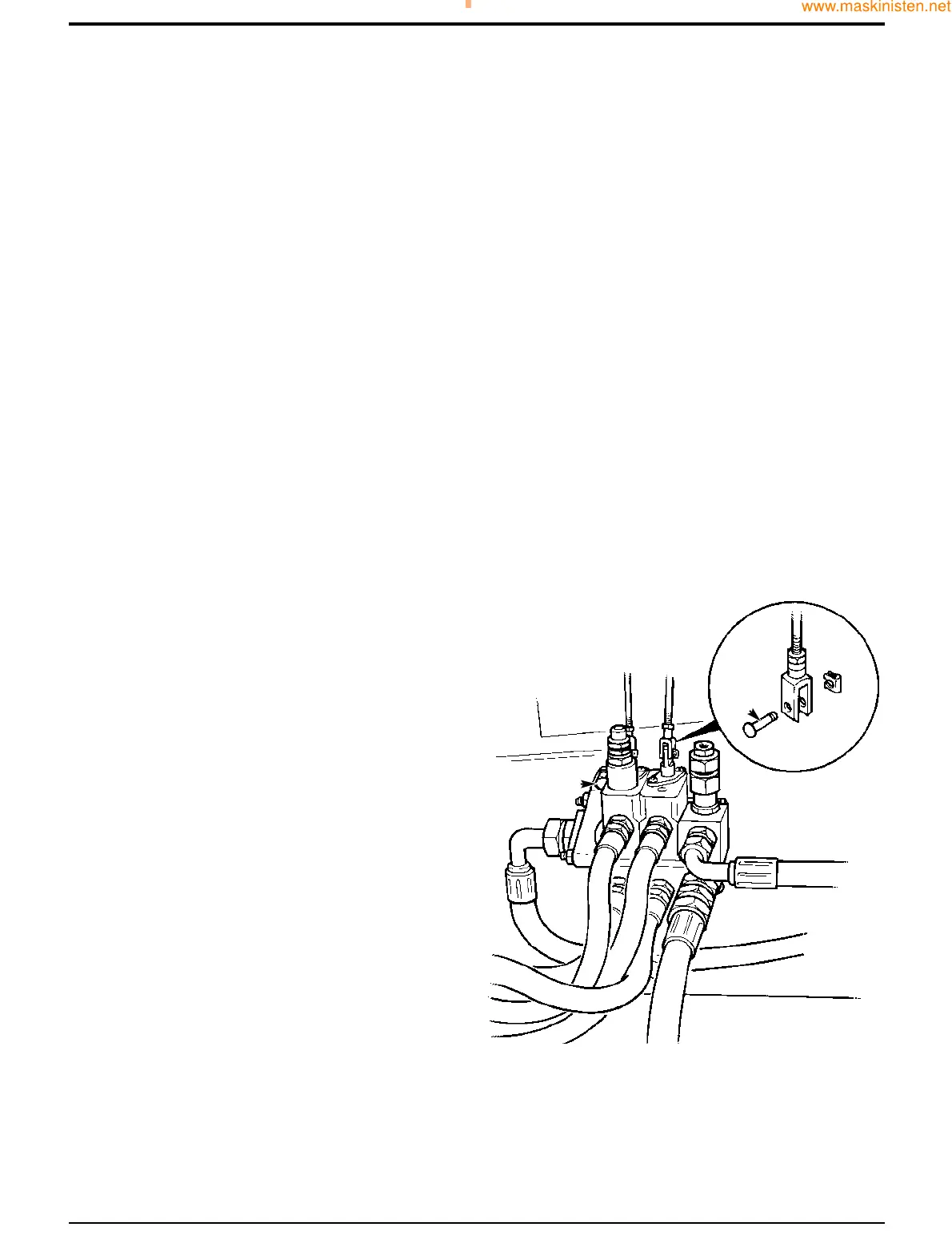Removal and Replacement
!!
WARNING
Make the machine safe before working underneath it.
Park the machine on level ground, lower the arms. Apply
the parking brake, put the transmission in neutral and
stop the engine. Chock both sides of all four wheels.
Disconnect the battery, to prevent the engine being
started while you are beneath the machine.
GEN-1-2
!!
DANGER
Hydraulic Pressure
Hydraulic fluid at system pressure can injure you. Before
disconnecting or connecting hydraulic hoses, stop the
engine and operate the controls to release pressure
trapped in the hoses. Make sure the engine cannot be
started while the hoses are open.
INT-3-1-11/1
Removal
1 Operate the valve block levers back and forth to vent
residual pressure.
2 Remove clevis pins A to disconnect the control levers
from the valve block spools.
3 Disconnect all hydraulic hoses from the valve block and
plug all orifices to prevent ingress of dirt. Label each
hose before disconnecting, this will ensure correct
position when refitting.
4 Loosen and remove bolts B, spring washers and plain
washers. Remove the loader valve.
Replacement
Replacement is a reversal of the removal sequence.
!!
WARNING
Fine jets of hydraulic fluid at high pressure can penetrate
the skin. Do not use your fingers to check for hydraulic
fluid leaks. Do not put your face close to suspected
leaks. Hold a piece of cardboard close to suspected
leaks and then inspect the cardboard for signs of
hydraulic fluid. If hydraulic fluid penetrates your skin, get
medical help immediately.
INT-3-1-10/1
After replacement check the main relief valve (M.R.V.) and
auxiliary relief valve (A.R.V.) pressure settings, refer to
Service Procedures, Pressure Testing - MRV and ARV’s.
Note: All hydraulic adapters that are installed together with a
bonded sealing washer must also have JCB Threadseal
applied to the threads of the adapter.
50 - 1
Section E Hydraulics
9803/7130
Section E
50 - 1
Issue 1
Loader Valve
AA
BB
S266270

